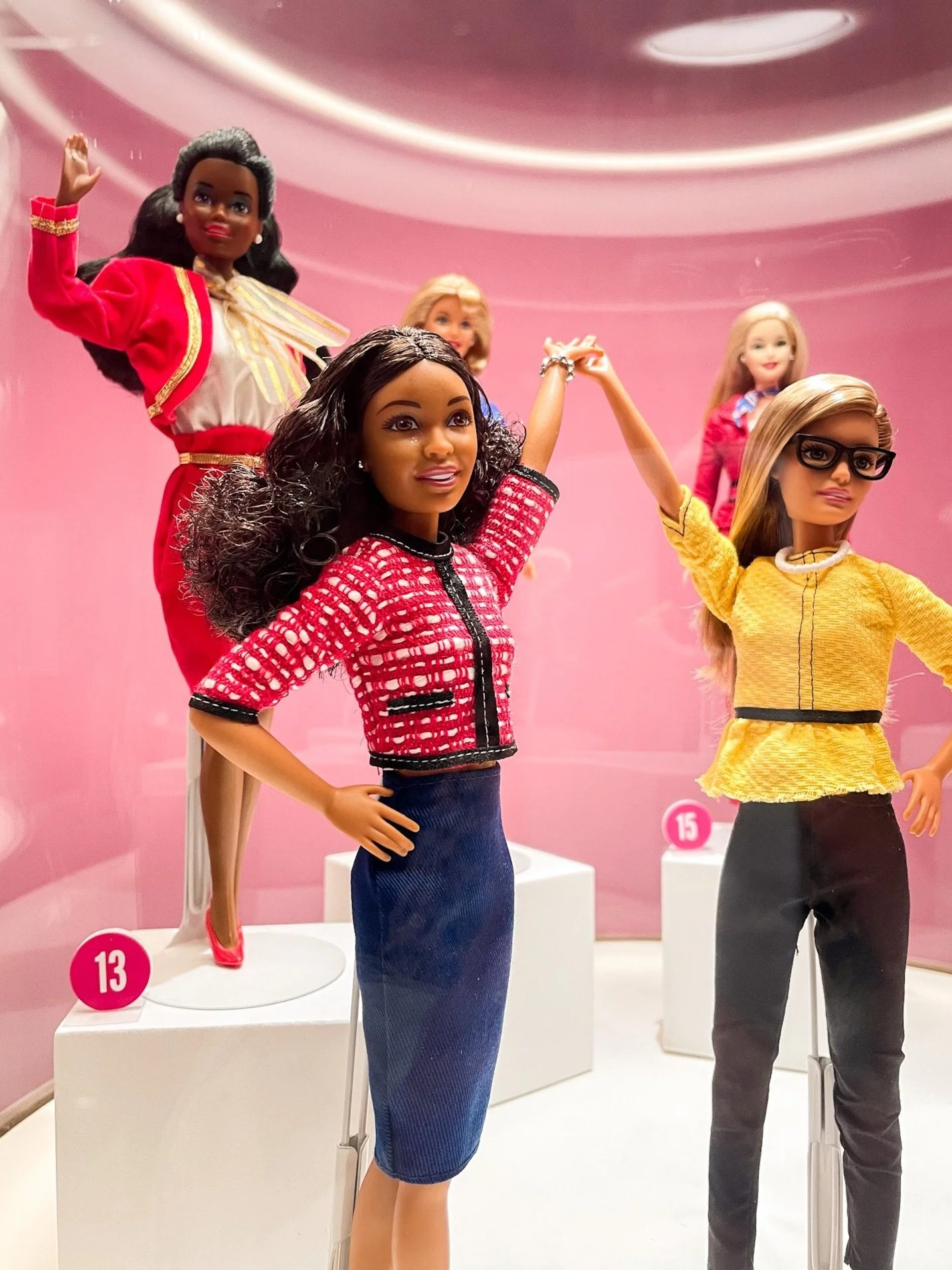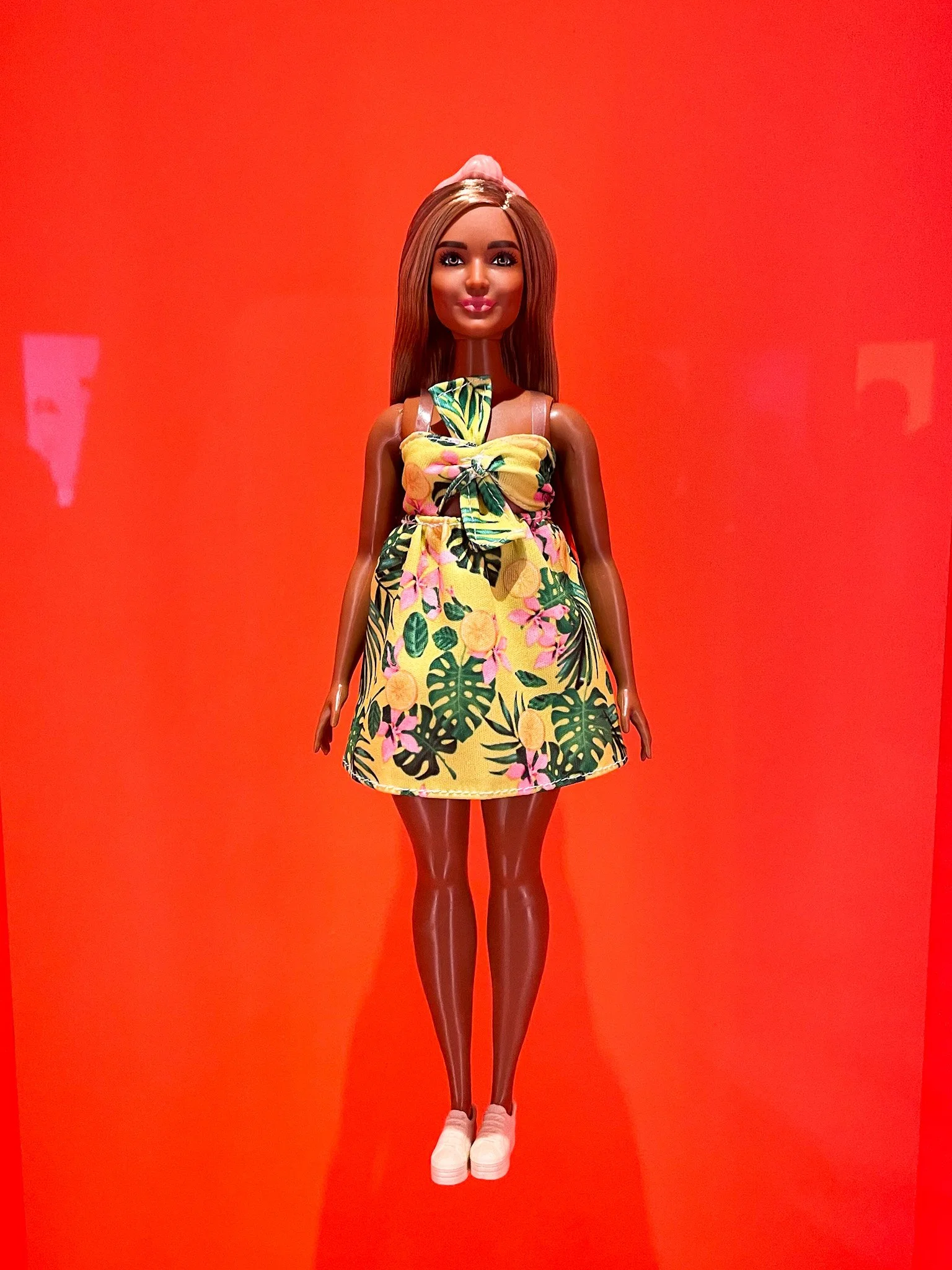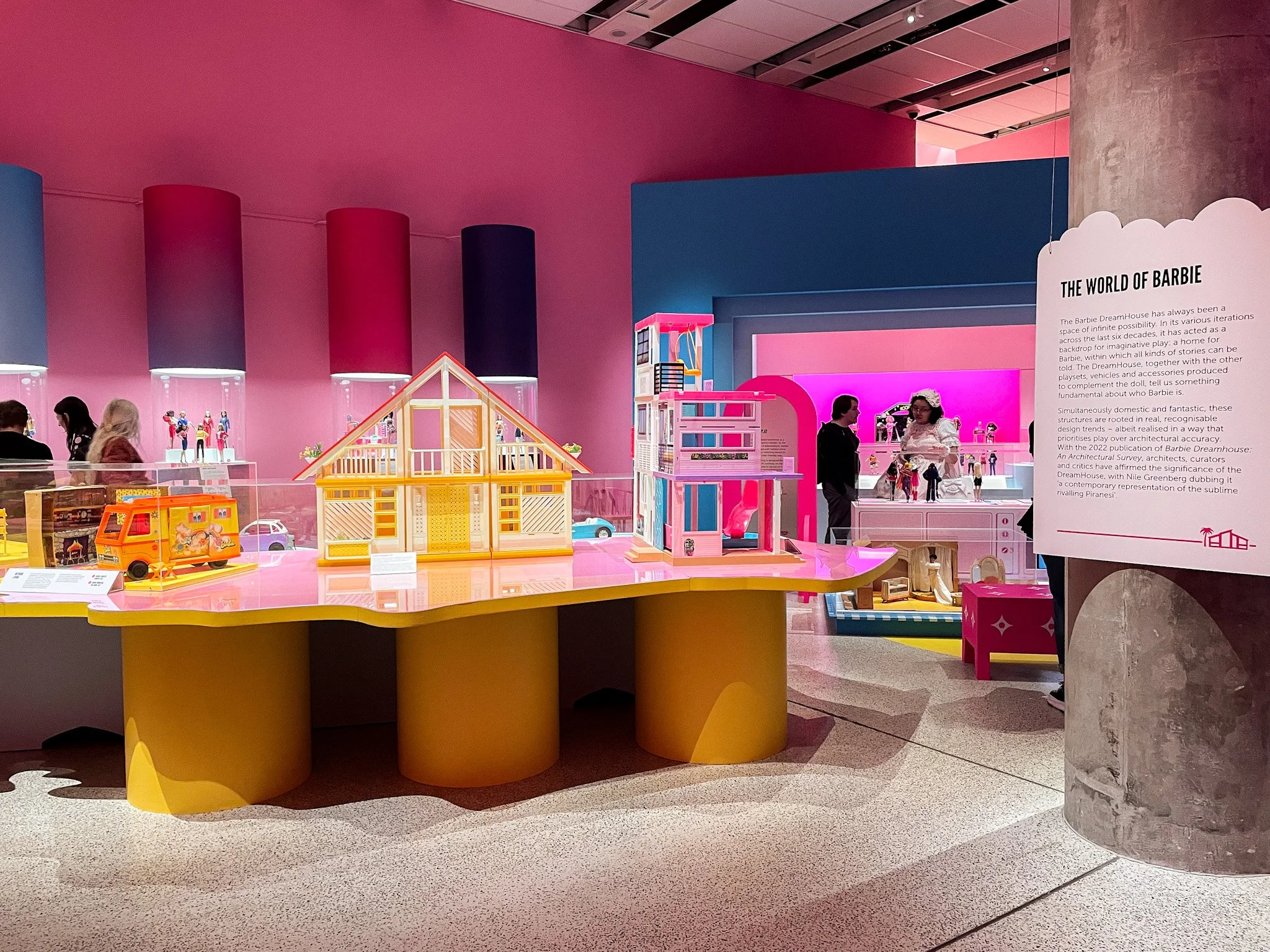REVIEW: BARBIE: THE EXHIBITION
Is it art or genius marketing? I don’t know, but I’m here for it!
By Clara Günthner
The new and long-awaited Barbie exhibition opened at the Design Museum on 5 July – in perfect timing for the doll’s sixty-fifth anniversary this year.
Barbie: The Exhibition explores the Barbie universe through a design lens, “looking at the ways in which the world of Barbie reflects the ‘real world’”.
On display are more than two hundred and fifty Barbie items, including one hundred and eighty dolls of Barbie and her friends as well as clothing, accessories, Dreamhouses, cars, and even some of the outfits worn by Margot Robbie in the recent Barbie movie.
The exhibition starts with a dramatically staged Barbie doll under neon-pink lighting, wearing a black-and-white swimsuit, her blonde hair in a ponytail, white sunglasses in hand and, of course, black heels on her high-heel feet – an outfit fans might recognise from the opening sequence of the movie.
As a “major highlight of the exhibition” this very first Barbie doll (‘No. 1 Barbie’), released in 1959, sets the tone for the rest of the exhibition and promises a show full of nostalgia, drama and iconic looks.
In the next room, we see early editions of Barbie and her friends and, of course, the first Ken doll along with a timeline highlighting Barbie’s evolving careers and noteworthy events in the Barbie universe. Monitors are showing Barbie commercials from the 60s and 70s for nostalgic effect.
Another powerful exhibit, and my personal highlight, is a display of twenty-four Barbie dolls in rainbow-coloured, lighted cases, showcasing the evolution of the doll’s design, including significant changes in fashion, head shape, facial features, skin tones, hair texture, and – more recently – even body shapes.
As someone who didn’t grow up playing with Barbie, the detail and depth of the Barbieverse was completely lost on me until now.
Exploring the six rooms full of plastic dolls and accessories is an immersive, joyful experience, not least because of the popping colours, sophisticated displays, and the sheer amount of stuff there is to see.
I feel like a kid in a toyshop, the only difference being that I’m not allowed to touch things (oh, how I want to touch the Barbie hair chandelier!)
Presidential candidate Barbies
While I learn some facts that strike me as surprisingly progressive (did you know Barbie was an astronaut four years before the first man landed on the moon, had her first apartment at a time when it was virtually impossible for a single woman to get a mortgage, and was a black presidential candidate as early as 1992?), others leave me underwhelmed.
‘Curvy’ Barbie
The three new body types, for example, which Mattel introduced in 2016 to “better reflect the world that children see around themselves”, make me wonder: have the designers looked around themselves? Have they seen women’s bodies recently?
The diversified range of doll bodies now includes a ‘tall’, ‘petite’ and ‘curvy’ shape. While tall and petite Barbie are stubbornly thin, curvy Barbie has wider hips than her skinny sisters and ever so slightly more fat on her arms, legs and belly.
Yes, it’s refreshing to see a Barbie doll with a more realistic body shape, but please don’t call her curvy if she has a thigh gap!
But this is criticism aimed at the product, not the exhibition, and if you can accept that Barbie will be Barbie, the show has a lot to offer.
Long-time fans of the plastic doll are especially taken with its nostalgia aspect.
The London-based blogger Sena Hassoun, 39, who grew up with Barbie, visited the exhibition within a few days of opening.
She said: “It brought back so much nostalgia for me. Being born in the 80s, my choice of doll was always Barbie!”
For Hassoun, the only downside of the exhibition was that she was left wanting more (but the museum shop delivered).
Claire Jones, a London-based live event artist and illustrator, took out a membership at the Design Museum with the Barbie exhibition in mind and is already planning a second visit.
Like Hassoun and many others, Jones said she “enjoyed the nostalgia aspect of seeing houses and accessories [she] had played with as a child” but that she would have liked to see more of the fashion designer collaborations.
She said: “I think it’s always hard putting together something as expansive as Barbie as there will always be something not in there you think should have been.”
It was that specific Barbie McDonald’s from the 80s she was missing in the collection.
There might not be a Barbie McDonald’s on display, but you will be able to see the first ever Barbie Dreamhouse, her first car and campervan, and several iconic Barbie dolls, including the popular ‘Day to Night Barbie’, ‘Peaches ‘N Cream Barbie’, and ‘Totally Hair Barbie’.
In much contrast, and in classic Barbie fashion, only a small section of the exhibition is dedicated to Ken. He’s just Ken after all.
You don’t have to be a long-time Barbie lover to appreciate the shiny, colourful collection of toys and get pulled into her fantastic plastic Barbie world…but it might help overlook some of the more questionable aspects.
While the exhibition is well-curated, informative and an absolute joy for the eyes, it feels a little too celebratory of its subject at times, a little too much like marketing. There’s a lot of praise for Barbie’s achievements but very little critical discussion, which leaves me with conflicting feelings.
And yet, it’s the contradictions of the Barbieverse that really make you think.
Barbie: The Exhibition is a lot of things – it’s a glossy, escapist fever dream in pink, a thought-provoking journey through the history of Barbie’s impactful design, and an unashamed celebration of a much-beloved, maybe progressive, maybe problematic but nonetheless iconic plastic doll.
Whether you go for the design, the fashion, the nostalgia, the aesthetics or the complicated feelings – Barbie will deliver!











